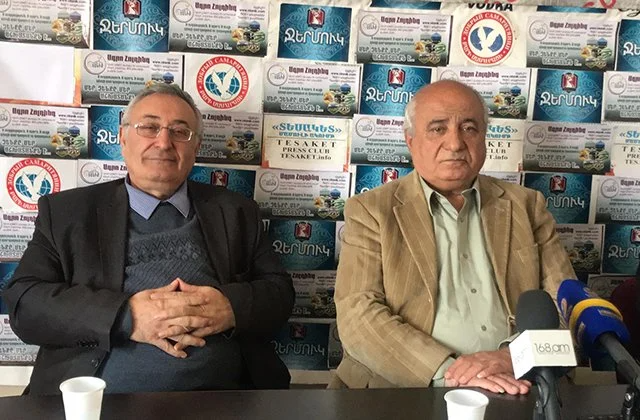“After the Soviet Union collapsed, Armenia has completely ignored culture and the Armenianology sector in general over the past 30 years at the state level… If we are to speak about the material cultural heritage, nothing has been done or planned from the 1990s until today in Armenia or historical Armenia to maintain it,” Armenianologist and Nakhichevan specialist Argam Ayvazyan said at the Tesaket club.
He also spoke about the Armenian cultural heritage in Nakhichevan, which, according to him, was razed to the ground by Azerbaijan. The Armenianologist said that the number of artifacts was around 26,000-27,000. “The government at the time under Robert Kocharyan’s leadership did not speak about that once during negotiations with Azerbaijan. It did not open its mouth,” the expert emphasized. He added that the Armenian side only sent appeals to the EU, UNESCO, and other international organizations, but they were not persistent.
“In the case of a country with a state policy like Armenia, the monuments of the territories under Azerbaijan control after the recent war have been openly destroyed by Azerbaijan. And Armenia gave Azerbaijan the right to destroy monuments through its inaction. Azerbaijan also has the destruction of Armenian monuments in Nakhichevan as a precedent,” Argam Ayvazyan said.
Historian Edik Minasyan said that he agrees with Argam Ayvazyan in the sense that we are facing the consequences of Armenia’s policies and the lack of punishment towards Turkey/Azerbaijan. According to him, the dissolution of the Ministry of Culture also had negative consequences for the country’s cultural policies. “We lived through a terrible period of time because many cultural monuments were ignored,” the historian said.
Read also
“There wasn’t any village in the Soviet Union where there wasn’t a monument dedicated to World War II. Today, everything is being ignored. There are many monuments, including ones dedicated to the Armenian Genocide, that have been ruined and left that way…
Let’s also not forget that Turkey has actively implemented a policy of destroying Armenian monuments in Western Armenia. That has been taking place constantly over the past 100 years. Today, we also know very well that Akhtamar’s Holy Cross church has been established as a museum, but they don’t let anyone hold any ceremonies there,” Edik Minasyan emphasized.
“According to UNESCO’s data, there were 1,950 monuments remaining in Western Armenia between 1916-1917, but those monuments were completely destroyed in the 1960s. The same holds true for Azerbaijan. Armenian monuments in Nakhichevan were destroyed, and Shushi’s Kanach Zham church no longer exists. They demolished and destroyed it… First, we need to speak up, and then present demands to the international community. It’s natural that this is a form of vandalism that is typical of Azerbaijan and Turkey, which continues. For example, in areas that are under Azerbaijani control such as Tigranakert, monuments are being destroyed… Thank God, at least we held onto Dadivank thanks to the Russian peacekeepers,” Minasyan added.
Gohar Hakobyan
























































